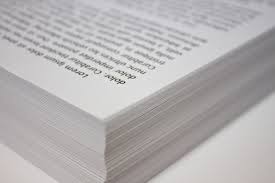Often a good title is an ironic play on words, like John Sayles perfectly named “At the Anarchist’s Convention.”
Working out titles for books, a film, a song or various shorter pieces is one of the pleasures of writing. A title is a kind of flag. It identifies a specific effort to capture a subject or the attitude of its author. It ought to be suggestive of what a reader or listener can expect to find. And it is sometimes meant to be a hook, baiting a reticent audience to take a chance.
A conventional view among some writers and publishers is that a good title is approximately three words. Think of To Kill a Mockingbird, The Odd Couple, The Grapes of Wrath, The Cherry Orchard, Angels in America, East of Eden, or Rebel Without a Cause. The three-word rule was on my mind in choosing The Perfect Response. It seemed like a good fit for my humble book on public rhetoric, and later, this blog. And then there are the gentle ironies of titles that suggest pages promising insights created by unusual alignments. For example, there’s John Berendt’s Midnight In the Garden of Good and Evil or Robert Pirsig’s Zen and the Art of Motorcycle Maintenance. Ideas that appear to be alien to each other often make interesting titles, though I was surely too pleased with myself for using “Case Studies in Constructive Confrontation” as a book’s subtitle. But my mother–probably the lone reader of the book–liked it.
Often a good title is an ironic and funny play on words, perhaps a non-sequitur like the title of a John Sayles short story, At the Anarchist’s Convention. Book titles don’t get any better than this. Can anarchists pull off an organized event? Jerry Stiller’s humorous reading below leaves no doubts; the can’t.
https://www.youtube.com/watch?v=9xvsvKQ9XV0
The names of hair salons have mastered this playful kind of humor. Apparently there’s a Sunny and Shears and a Hey, I’m Dyeing Over Here sitting somewhere among shops with more prosaic names.
Some titles have a grace that matches their essence, like John Hartford’s Gentle on my Mind, which is now usually sung as a tribute to Glen Campbell. There’s also Pete Seeger’s beautiful tribute, To the Old Brown Earth, sung at memorial service of a friend, and below, by young singers from Milwaukee.
In a very different genre, but creating a broader smile, is Mark Chesnutt’s country ditty, Bubba Shot the Jukebox, which can be heard in his album Longnecks & Short Stories. (1992).
Titles are almost always interesting welcome mats, inviting us in. They are reminders of how much we owe to the playfulness and associations created through language.
